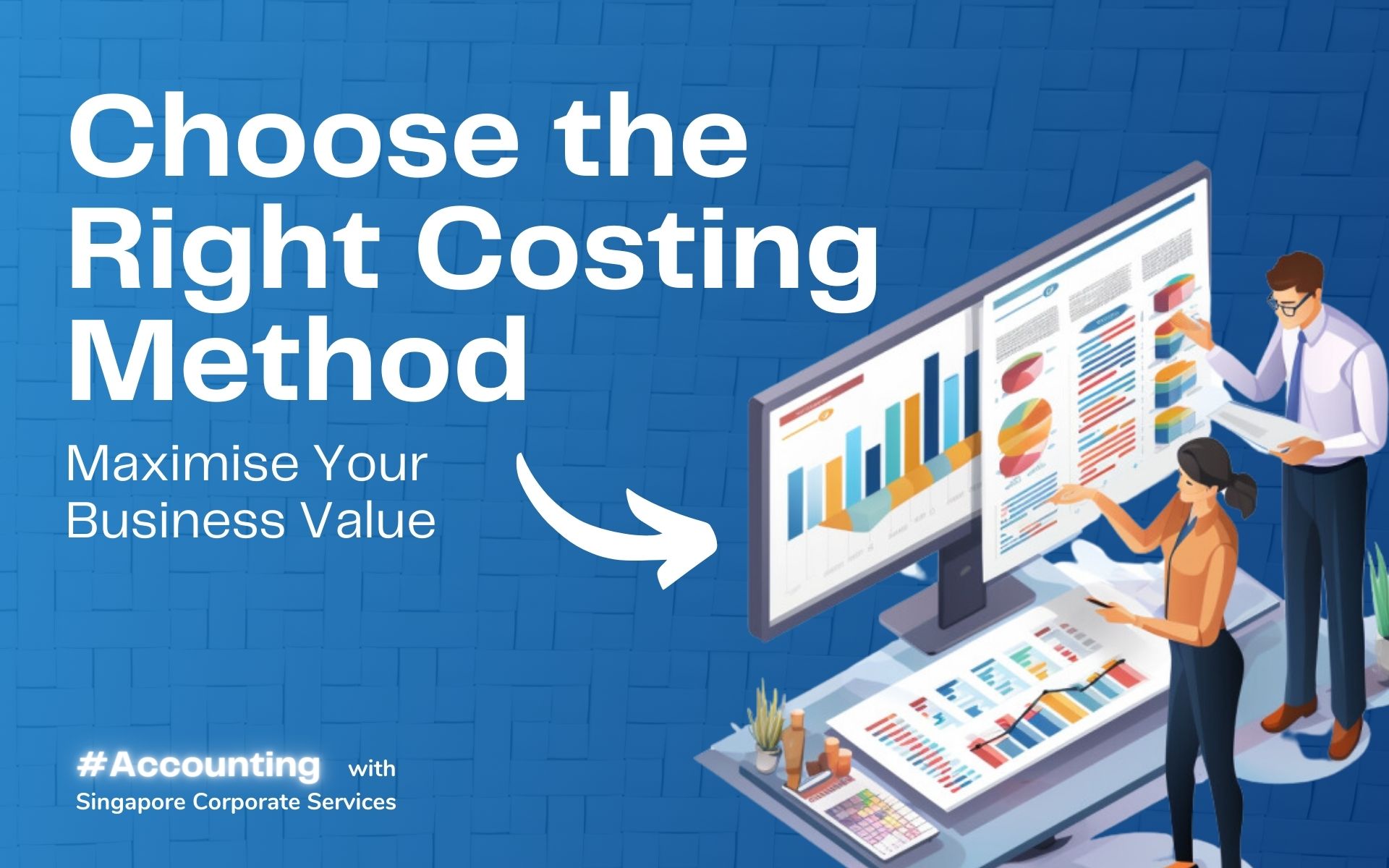
Costing Method for Your Business
Every company possesses its own distinct characteristics and traits, necessitating the adoption of various costing methods to determine product prices.
By identifying and implementing the most suitable costing method for your company, you can provide optimal value to both yourself and your customers, all the while alleviating the burden on your accountant. This approach involves starting with the desired sale price in mind, as it provides a clear target. In this article, we will explore the concept of costing methods and delve into several types of costing that can effectively track expenses within your business.
What Is a Costing Method?
Costing, also known as cost accounting, is a method used by companies to determine the cost of production. It involves analysing both variable and fixed costs involved in the production process. Costing methods help calculate the total expenses associated with manufacturing a product or delivering a service. Different costing methods are suitable for different production and decision-making scenarios. It’s important to use the information from costing methods appropriately.
Unlike other forms of accounting, costing is primarily performed by internal management and is not typically visible to external clients or institutions. This gives cost accounting greater flexibility as there are no rigid standards it must adhere to.
Types of Costing
The internal finance or management team of an organisation commonly uses various types of cost accounting to effectively analyse and manage costs. The most common types include:
- Job Order Costing: This method is used when products or services are customised or produced in small batches. It tracks the costs associated with each specific job or project, providing a detailed breakdown of materials, labour, and overhead expenses.
- Process Costing: Process costing is suitable for industries with continuous mass production, such as manufacturing or chemical industries. It calculates the average cost per unit by spreading the total production costs over the units produced within a specific period.
- Activity-Based Costing (ABC): ABC allocates costs based on the activities involved in producing a product or providing a service. It identifies and assigns costs to different activities and cost drivers, providing a more accurate understanding of the resources consumed by each product or service.
- Standard Costing: Standard costing involves setting predetermined costs for materials, labour, and overhead. Actual costs are then compared against these standards to measure variances and identify areas for improvement.
- Target Costing: Target costing involves working backward from the target selling price to identify cost reduction opportunities and make decisions that optimise the cost-to-value ratio. By aligning costs with customer expectations, companies can develop competitive products that satisfy customers while maintaining profitability.
These various cost accounting methods provide organisations with valuable insights into their cost structures, enabling informed decision-making, cost control, and performance evaluation. The choice of which method to use depends on the nature of the industry, the production process, and the specific information needs of the organisation.
Making Informed Decisions with Effective Inventory Cost Accounting
Inventory costing involves assigning costs to products and is commonly referred to as inventory cost accounting. Businesses that manage inventory typically use this method. These costs encompass not only the direct expenses of production but also incidental expenses like storage, administration, and market fluctuations. To ensure accurate reporting, Generally Accepted Accounting Standards (GAAP) establish standardised accounting guidelines to prevent companies from overstating these costs.
Effective inventory management plays a vital role in optimising overall inventory costs and determining the appropriate quantity of products a company should maintain in its supply chain. By analysing relevant data, businesses can make informed decisions regarding product margins and the allocation of resources to different product categories.
When pricing materials, both purchased materials and those that are Made-to-Stock (MTS) are evaluated based on their inventory costs. To determine the value of inventory, companies employ inventory costing methodologies.
Inventory Accounting Methods
Inventory accounting methods refer to various approaches businesses can use to calculate the cost of their inventory. Here are the commonly used methods:
- First In, First Out (FIFO): In FIFO, the assumption is that the items purchased first are also the first ones sold. This method ensures that older inventory costs are recognized first, reflecting the chronological order of purchases and sales.
- Last In, First Out (LIFO): Contrary to FIFO, LIFO assumes that the most recently purchased items are the first ones sold. This method implies that the cost of inventory reflects the most recent prices paid for goods.
- Specific Identification Method: The specific identification method involves associating the actual cost with each individual product. This approach is particularly useful when dealing with large inventory items like machinery or vehicles, where each unit has a unique cost.
Additionally, businesses may use the Weighted Average Cost method alongside these methods:
- Weighted Average Cost: The weighted average cost calculates the average cost per unit by multiplying the cost of each item by the quantity sold and then summing up these calculations. This method provides a more accurate representation of the cost per unit for the items sold, especially in situations where individual item costs change over time or when certain products have varying sales frequencies.
The weighted average cost method is used to address cost fluctuations of individual items over time and account for products that have varying sales frequencies. By considering both the cost and quantity of each item sold, this method provides a more precise calculation of the average cost per unit for the items that have been sold.
Choosing the Right Method
The choice of inventory method depends on individual business needs and the specific products being sold. Choosing the most appropriate approach for your business won’t be an easy feat, and the variety of available strategies won’t make it any easier. However, here is a general guideline to assist in selecting the most appropriate pricing approach:
- Job order costing is more suitable for customised items or small production batches.
- Process costing is a simple-to-use method when producing numerous homogenous products in large quantities.
- Activity-based costing may be the preferred option for mass-produced goods, as the cost per unit can vary based on the manufacturing processes employed.
- Standard costing results in significant accounting efficiencies as they are used as a close approximation to actual costs.
- Target costing ensures that products are created and priced to meet customer expectations.
For small businesses with diverse products and varying aggregate costs, the average cost method is a suitable option. It is a straightforward calculation that is easy to understand, making it convenient for smaller teams.
Get professional help today!
It is crucial to choose the right costing approach that suits your company’s needs and provides valuable data for decision-making. At Singapore Corporate Services, we understand the importance of accurate cost analysis, budgeting, and maximising profit margins for your business. Take the first step towards healthier finances by scheduling your free consultation with us today!
How to Change Your Company Name in Singapore
A company's name can significantly shape its identity, yet there are times when a change becomes...
Is Singapore a Tax Haven? A Comprehensive Analysis
Is Singapore really a tax haven, or is it simply capitalising on tax policies that spur economic...
Fiscal Year vs Financial Year: Definitions and Implications
Is there a difference between a fiscal year and a financial year? While they both refer to the...



